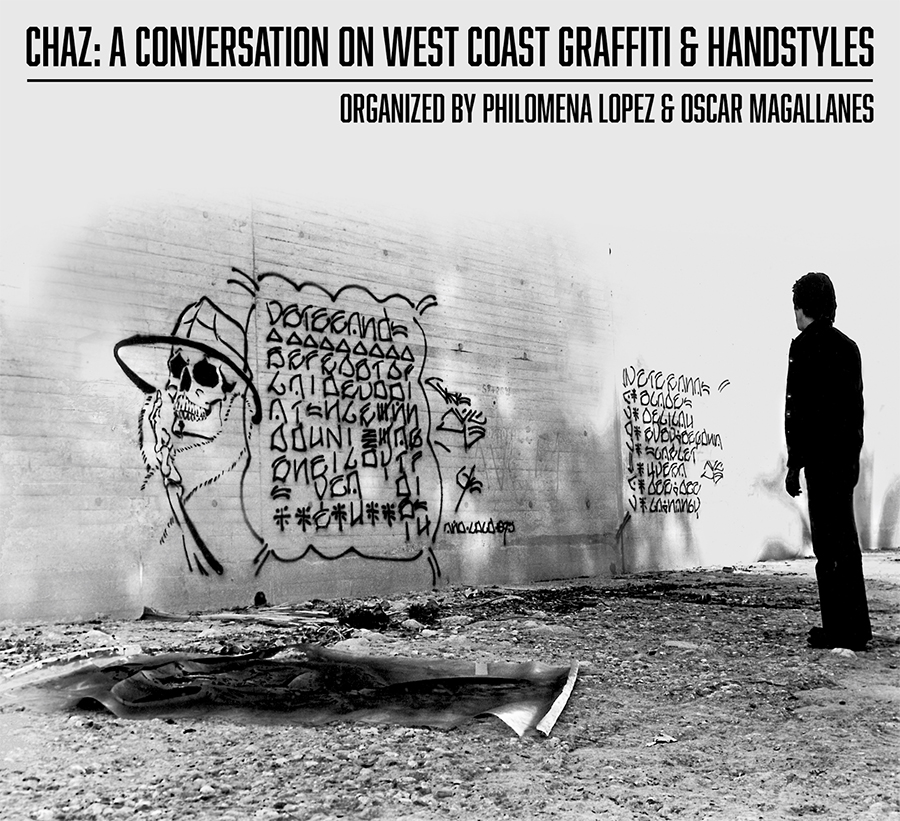Chaz: A Conversation on West Coast Graffiti & Handstyles
February 24 - 29, 2020
SME 142, Visual Arts Gallery, Structural & Materials Engineering Bldg., UC San Diego
Mon. 10:30 a.m. - 5 p.m.
Tue. 1 p.m. - 6 p.m.
Wed. 8:30 a.m. - 4 p.m.
Thu. 8:30 a.m. - 3 p.m.
Fri. 8:30 a.m. - 3 p.m.
Sat. 3 p.m. - 6 p.m. (during OPEN STUDIOS)
Charles “Chaz” Bojorquez, is acknowledged internationally as the ‘godfather’ of East Los Angeles ‘cholo’ style graffiti. His work first appeared on the streets of Los Angeles in the late 1960s. In 1969, Chaz enrolled into Chouinard Art School, now CalArts where he studied calligraphy. He then combined this with the traditional cholo graffiti also known as handstyles with which he had grown up. In the same year, Chaz created a stylized skull “Señor Suerte”. It is one of the first examples of stencil being art applied to graffiti. In Los Angeles, the image of “Señor Surete” was adopted in the form of tattoos as a form of protection against death. Chaz Bojorquez has influenced successive generations of graffiti artists, chicano artists, and tattoo artists. His works are in the permanent collections of the Smithsonian National Museum of American Art LACMA, and Museum Of Contemporary Art.
Chaz: A Conversation on West Coast Graffiti & Handstyles, organized by doctoral candidate Philomena Lopez and MFA candidate Oscar Magallanes, seeks to show the significance of Chaz’s work to both academic and artist. The exhibition showcases Chaz’s artwork, historical images documenting some of his early graffiti along with early images that give context to the development of handstyles in Los Angeles. The exhibition includes work of El Mac, Retna, and Oscar Magallanes, three artists that Chaz has directly influenced through mentorship and through his iconic Chicano handstyles aesthetic. While the artists have each developed their own practice and unique style, traces of Chaz’s influence such as the line work, colors, iconic imagery, the strong graphic nature and lettering are evident in the works displayed.
